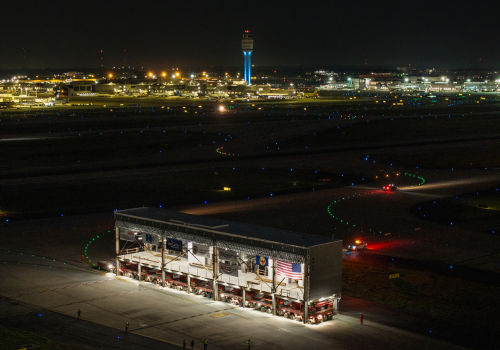Construction's Heat Safety Crossroads: Making Sense of OSHA's New Heat Rules
.png)
The summer sun beats down mercilessly on a Dallas construction site as workers pour concrete for a new office building. It's 95 degrees Fahrenheit, but the heat index pushes well above 100. Under OSHA's proposed heat safety rules, this scenario would trigger mandatory rest breaks, constant monitoring, and a host of other safety measures. For construction owners nationwide, these rules represent both a crucial safety evolution and a complex operational challenge.
The numbers tell a stark story. Between 2011 and 2022, environmental heat claimed 479 workers' lives across industries, averaging 40 fatalities per year. Construction sites, with their combination of physical labor and exposure to the elements, face particular risks. OSHA's proposed regulations aim to address this deadly hazard with comprehensive requirements that would fundamentally change how construction sites operate in hot conditions.
The proposed regulations establish two critical temperature thresholds. At 80 degrees Fahrenheit, initial safety measures kick in, requiring readily available drinking water, rest break allowances, and access to cooling areas. When temperatures hit 90 degrees, additional protections become mandatory, including scheduled rest periods and enhanced monitoring systems. For construction owners, these requirements translate into both operational challenges and opportunities for innovation.
Consider the practical implications:
- Construction sites would need designated cooling areas, whether through shade structures or air-conditioned spaces.
- Regular rest breaks would become mandatory, potentially extending project timelines.
- Each site would require a heat safety coordinator and comprehensive monitoring systems.
- For multi-site operators, these requirements multiply across every active project.
The financial impact extends beyond immediate equipment and facility costs. Project timelines may need adjustment to accommodate mandatory rest periods. Training programs must be developed and implemented across all levels of the workforce. Documentation systems need enhancement to demonstrate compliance. Yet, these investments could yield significant returns through reduced accidents, lower insurance premiums, and improved worker retention.
"Initial costs shouldn't overshadow the long-term benefits," notes a senior safety director at a major construction firm who requested anonymity. "We've seen how proactive safety measures can actually improve productivity by reducing downtime from heat-related incidents."
The political landscape adds another layer of complexity. With speculation about potential changes under a different administration, construction owners face difficult decisions about the timing and extent of their investments in heat safety infrastructure. However, industry experts suggest that regardless of political shifts, some form of enhanced heat safety standards is likely inevitable.
For construction owners, the path forward requires careful strategic planning. Many are already beginning baseline assessments of their current heat safety measures and evaluating necessary upgrades. Forward-thinking companies are exploring technological solutions for heat monitoring and worker communication. Some are revising their bidding practices to account for these new operational requirements.
The regional impact varies significantly. Southern states, already familiar with extreme heat challenges, may find their existing practices closer to compliance. Northern regions, despite fewer high-heat days, must still prepare for summer conditions and indoor heat exposure. This geographic diversity underscores the need for flexible, adaptable implementation strategies.
Training presents another crucial challenge. The rules require comprehensive education programs for workers and supervisors, often needing delivery in multiple languages. This educational component extends beyond simple rule compliance to creating a culture of heat safety awareness.
Despite the challenges, many industry leaders see these regulations as an opportunity to modernize safety practices. Advanced monitoring systems, improved communication technologies, and innovative cooling solutions could enhance overall project efficiency while protecting workers.
The construction industry stands at a critical juncture. While OSHA's proposed heat rules present significant implementation hurdles, they also offer a framework for addressing a serious workplace safety issue. Success will likely come to those who view these requirements not as mere regulatory compliance but as an investment in workforce protection and project efficiency.
As the industry awaits final regulatory clarity, one thing remains certain: the future of construction will include more comprehensive heat safety measures. Companies that begin preparing now, while maintaining flexibility for potential modifications, will be best positioned to thrive in this evolving landscape. The key lies not just in meeting minimum requirements but in developing systems that enhance both worker safety and operational excellence.
OSHA encourages the public to submit comments to the Heat Injury and Illness Prevention rulemaking docket at https://www.regulations.gov/commenton/OSHA-2021-0009-4761. The comment period is open until December 30, 2024.
The smartest construction companies in the industry already get their news from us.
If you want to be on the winning team, you need to know what they know.
Our library of marketing materials is tailored to help construction firms like yours. Use it to benchmark your performance, identify opportunities, stay up-to-date on trends, and make strategic business decisions.
Join Our Community






